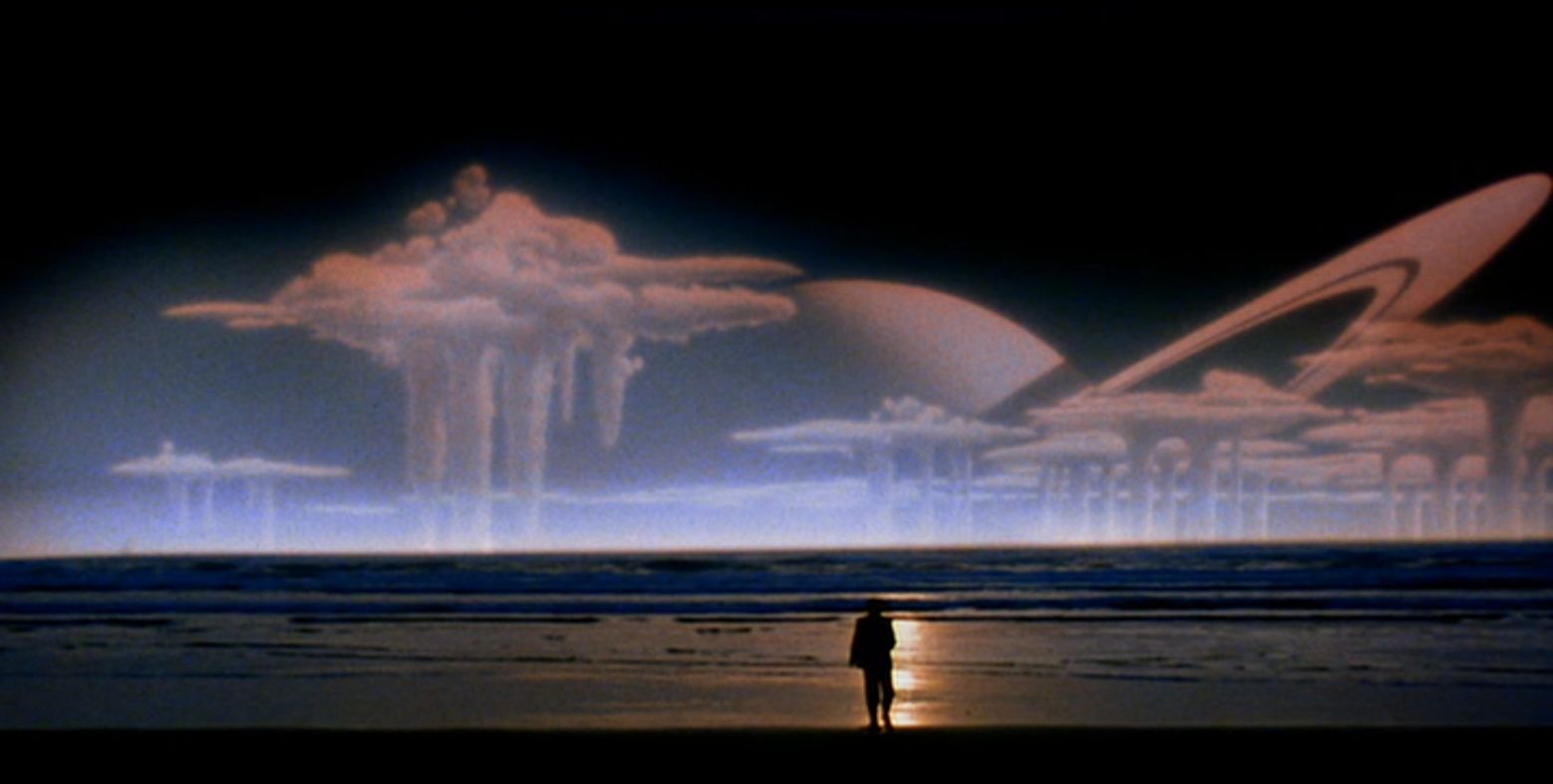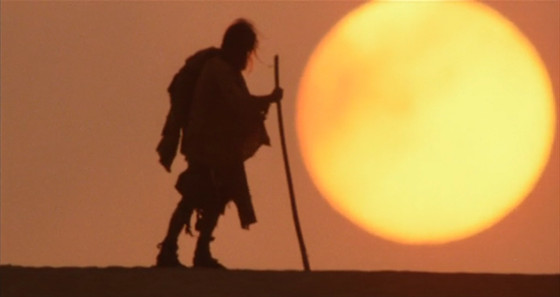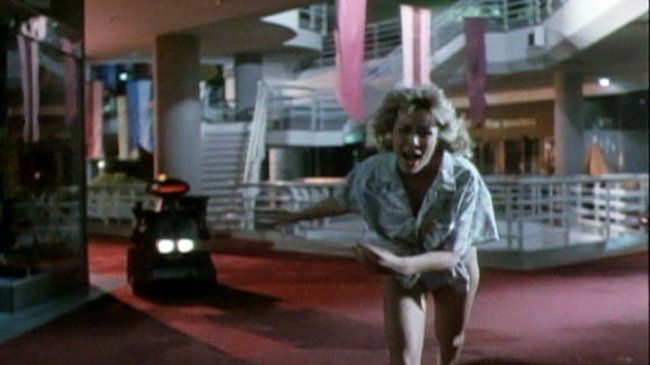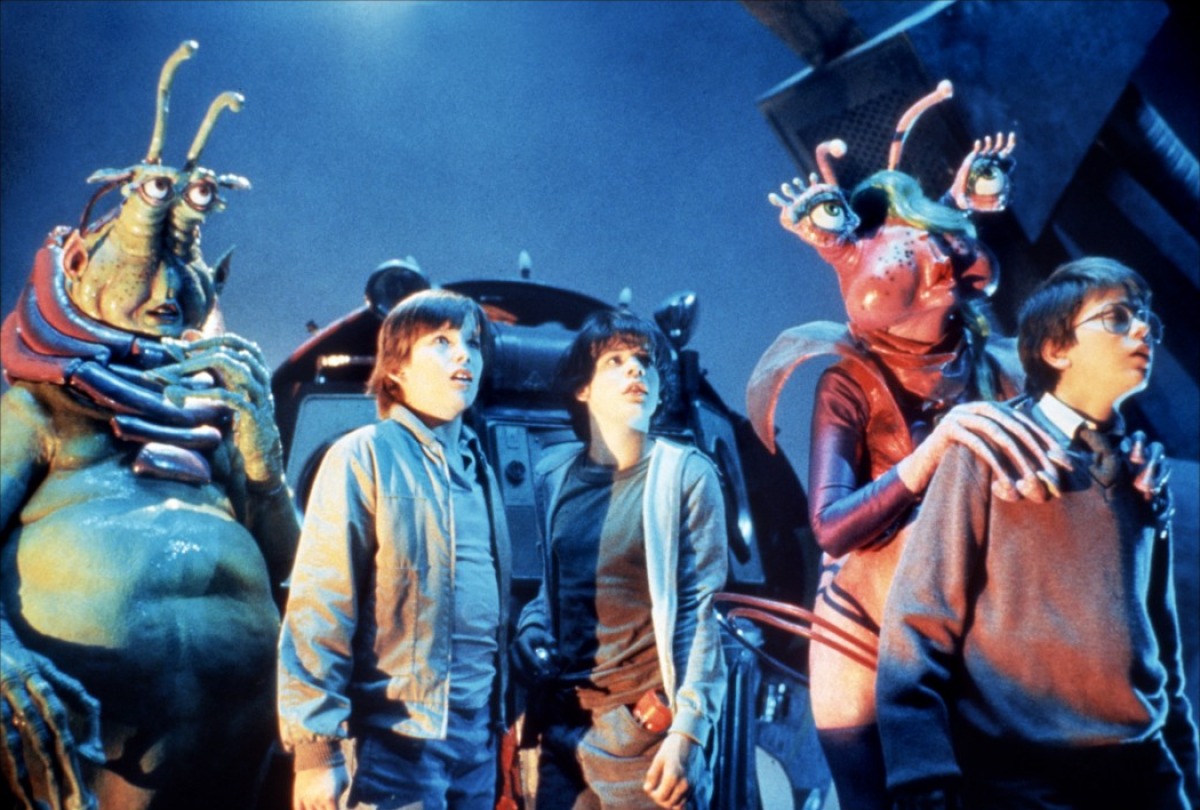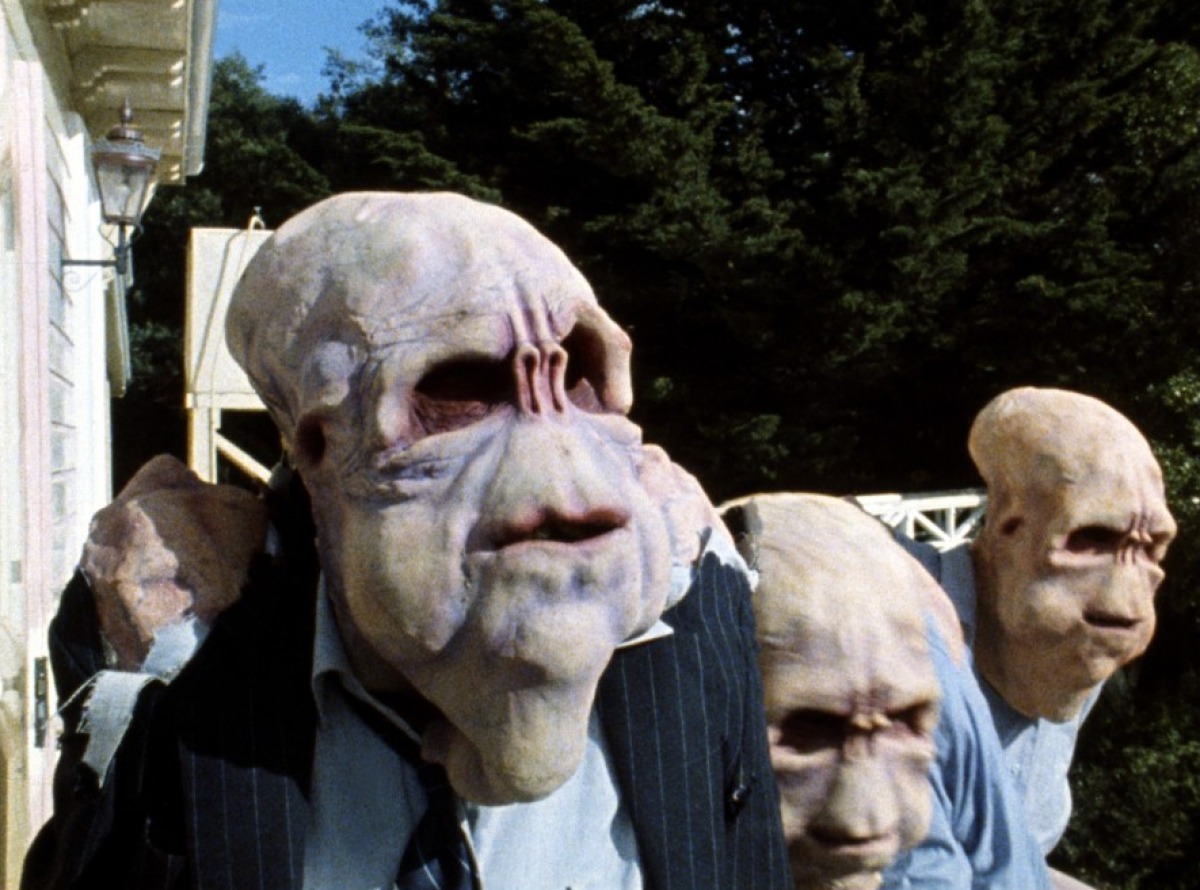In the late 1970s, Star Wars and Alien left such a huge mark on modern science fiction cinema that both films arguably redefined the genre for the average moviegoer. For the most part, we now thought of outer space as an action-filled playground populated by creatures both wondrous and horrifying.
Well into the following decade, studios used the same template to try and create the next Star Wars, the next Alien. Sure, there was still a lot of earthbound sci-fi being made at the time, but if you were a producer trying to hit one out of the park, you aimed for the stars.
The 80s were a strange decade for science fiction. Though many tried, nobody managed to come-up with the next Star Wars (other than its sequels, obviously). Then Steven Spielberg’s E.T. came along and cemented the notion that science fiction was most-lucratively presented as family fare, exasperated after more adult oriented (but no less expensive) films like Blade Runner, The Thing and Dune became notorious critical & box office disasters (hard to believe today, isn’t it?).
But there was still enough room for creative filmmakers with more limited budgets to grab a slice of the sci-fi pie. The fledgling Star Trek franchise finally found its voice with Star Trek II: The Wrath of Khan. John Carpenter had his biggest post-Halloween hit with Starman (a grown-up variation of E.T.).
With Spielberg’s help (and clout), Robert Zemeckis struck absolute box office gold with Back to the Future. George Miller’s Mad Max 2 and James Cameron’s The Terminator served as calling cards promising greater things to come. All the aforementioned films have become classics in their own right.
There are also a lot of decent films from the same genre and era which have fallen by the wayside, some which were just as ambitious as those with mega-budgets and bigger names in the credits. A few of the films on this list were actually minor box office hits at the time, but simply never resonated for too long afterwards, while others never really had the opportunity to find an audience to begin with, perhaps because they were too dark, indefinable or esoteric to be marketed effectively.
There are also a couple of titles which, on the surface, are low budget sleaze, but display enough ambition or talent behind the camera to render them somewhat memorable. However, something they all have in common is one or more qualities which make them worth discovery…or rediscovery.
10. Virus (1980)
In the year 1982, a pandemic known as the “Italian Flu” has wiped out everyone on Earth, save for several hundred people stationed in Antarctica (where it’s too cold for the virus to survive). But that’s just the beginning of their problems. An earthquake prompts the United States’ automated missile systems to commence launching, which in-turn will make the Soviets’ own system counter-attack, with one missile aimed right at the station where the survivors are located.
Featuring a huge international cast and epic production values, Virus was the most expensive Japanese film ever made at the time. However, it was a colossal flop, never given a wide release and later truncated from its original 156 minute running time to 108 for cable TV showings. These cuts rendered the narrative disjointed and occasionally nonsensical. A shame, really, since the original cut is beautifully bleak and truly epic in scope.
While the edited film has been widely available for years, finding a decent print of the much-superior uncut version is more difficult, but well-worth the effort. That version of Virus is a smart, politically-charged, somber and timely sci-fi disaster film.
9. Chopping Mall (1986)
This earnest little sci-fi/horror film was originally released as Killbots (a more accurate title). Initially unsuccessful, it was later re-released as Chopping Mall, presumably to capitalize on the popularity of slasher films at the time, with a new ad campaign which makes no reference to the malevolent robots in the story. Still, Chopping Mall has more in common with such technology-run-amok classics as Westworld than Friday the 13th.
The premise has several state-of-the-art sentry robots programmed to provide security in a suburban shopping mall, using non-lethal methods to thwart would-be thieves. One night, several folks decide to party in the mall after hours. At the same time, lightning strikes the mall, which messes with the robots’ programming and turns them homicidal.
Considering its low budget and goofy concept, Chopping Mall is actually pretty ambitious, raising it above much of the usual junk which glutted video store shelves at the time. It’s no masterpiece and far from the most original movie ever made, but with a surprising amount of humor and above-par performances (including such beloved cult favorites as Mary Woronov, Paul Bartel and Dick Miller in small roles), Chopping Mall is a good bit of (deliberately?) cheesy fun waiting to be rediscovered.
8. Enemy Mine (1985)
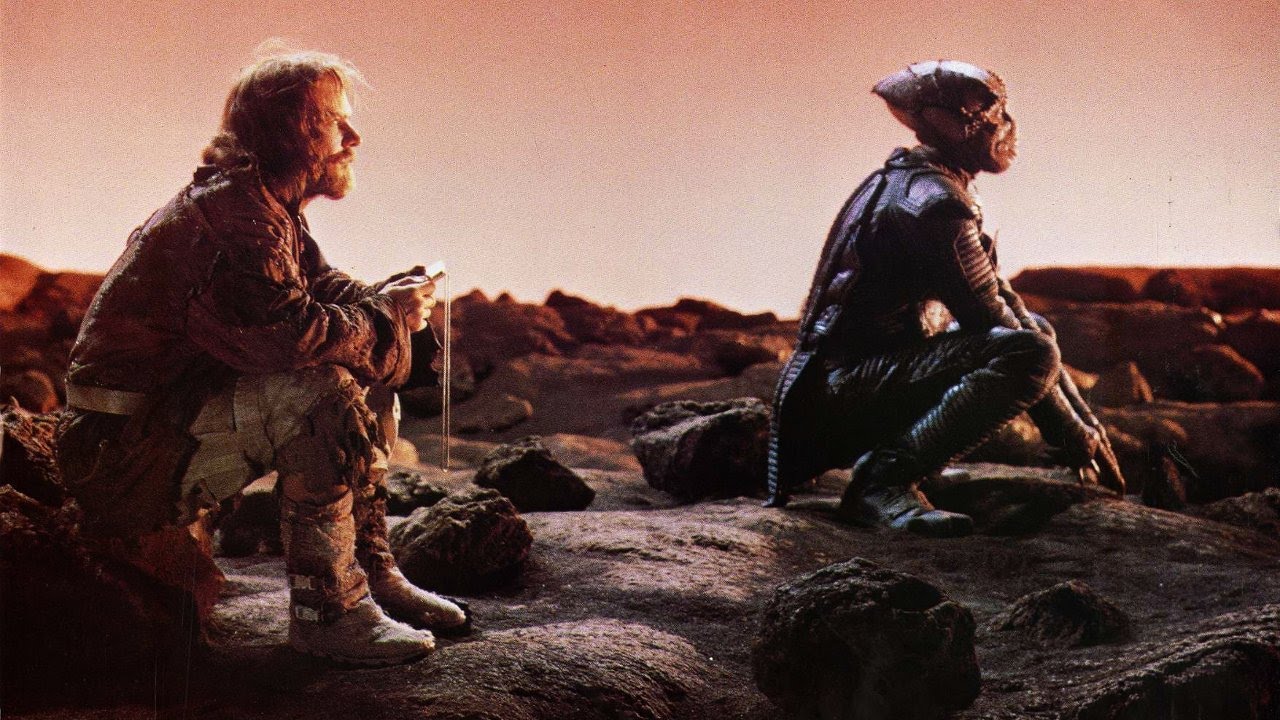
Though David Lynch’s notorious Dune debacle has gone down in history as the biggest sci-fi bomb of the 80s, Enemy Mine actually fared worse. Nearly as expensive, with a budget which spiraled out of control during its own equally troubled production, millions were spent on production design, special effects and Louis Gossett Jr’s elaborate alien make-up. But whereas Dune was a newsworthy financial fiasco, Enemy Mine came-and-went almost noticed.
While Dune gained a rather sizeable cult following over the years (as well as a few critical reassessments of its worth), Enemy Mine has been largely forgotten. Too bad, really, because while not a great film, it’s an entertaining tale of two warring space pilots (Gossett and Dennis Quaid) stranded on a hellish uninhabited planet and forced to depend on each other to survive.
The first half of the film is pretty interesting, with impressive alien make-up and some imaginative production design. Gossett and Quaid make amusing foes, important for a film which is ultimately more character-driven than the usual sci-fi epic.
Admittedly, Enemy Mine doesn’t totally live up to its intriguing premise, eventually descending into cornball, sloppy sentimentality and an abrupt ending which suggests they ran out of time or money. The special effects are also pretty terrible, even for the 80s. Still, while no classic, but far more entertaining than Dune.
7. Explorers (1985)
Gremlins notwithstanding, director Joe Dante’s quirky, whimsical tendencies have always been phenomenally underappreciated by both audiences and the studios who hire him. Most of his films contain elements which directly pay respectful homage to his influences, specifically old science fiction and classic cartoons. This sort-of makes him a geek version of Quentin Tarantino, only Dante’s obscure references to the past are largely lost on the modern mainstream.
One of Dante’s more personal films is Explorers, his first after hitting the big time with Gremlins. This one concerns three pre-teens of various backgrounds who build a spaceship from instructions given to one of them by extraterrestrials. Much of the first act focuses on the home lives and personalities of these kids, which is crucially important if we’re to have any stake in their fates. Alas, not every childhood is a happy one, which Explorers touches upon in a non-obtrusive way.
So while we share the emotional wonder of one kid whose sci-fi dreams are realized, we’re equally depressed by a close friend who comes from a broken home with parents who are indifferent to his well-being. Despite a final act that sort-of descends into cartoony slapstick, these feel like real kids placed in an unreal situation.
Though belatedly notable for featuring Ethan Hawke and River Phoenix in early roles, Explorers bombed in theaters and is largely forgotten today. A shame, really, since it has much of Dante’s patented quirkiness and goofy charm, coupled with a level of pathos and sentimentality not present in his more popular films.
6. Bad Taste (1987)
Years before he stunned the world with his Lord of the Rings Trilogy (and rendered The Hobbit as exciting as reading a textbook cover-to-cover), director Peter Jackson dedicated much of his energy aiming straight for the gag reflex. Two of his early films, Bad Taste and Braindead, were splatter comedies loaded with absurd levels of onscreen violence. Braindead, in particular, has since become a cult classic and is widely considered one of the goriest movies of all time.
Bad Taste, Jackson’s first film, is a grassroots production featuring a small group of government agents (including Jackson himself) trying to prevent aliens from harvesting the human race for a galactic fast food chain. This premise provides numerous opportunities for hideously gory set-pieces, as well as some splatstick moments which would be right-at-home in an old Monty Python sketch.
The over-the-top special effects range from sickeningly realistic to downright amateurish, but considering nearly all the gore gags were created by Jackson himself (in his mom’s kitchen) with almost no budget, one can’t help but be impressed. Performance-wise, it’s strictly amateur night, and attempts at humor run the gamut from clever to juvenile. Still, there are brief, shining glimpses of the auteur Jackson would later become.
